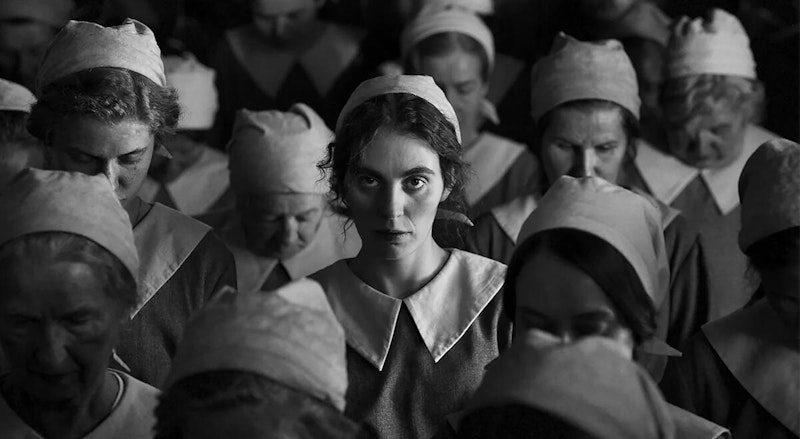In the 1910s, the Danish child caretaker Dagmar Overbye posed as a benefactor and offered to take care of infants born out of wedlock, or didn’t otherwise have households that were capable of child support. The service Overbye provided was the only opportunity that many young mothers had, as societal norms didn’t allow for these children to receive support without a public scandal. It was due to this secrecy that Overbye was able to pull off one of the most horrific crimes of the 20th century. Her noble persona was a façade: Overbye murdered at least nine children through strangulation, drowning, or burning them in a local masonry heater. Although she was eventually captured and tried for murder in 1921, she avoided the death sentence and spent the rest of her life in prison.
Overbye’s inhumanity is difficult to comprehend. While popular culture has grown infatuated with the unpredictable nature of serial killers, a true crime case like the Danish child murders doesn’t have the same poetic darkness as Se7en or The Silence of the Lambs. It’s not a particularly twisty story, as no intentions were ever masked. Although motivations for Overbye were hinted at through evidence that she also suffered abuse as a child, her apprehension didn’t result in her ascension into popular culture mythology. It was a rare case in which sympathy for the victims outweighed any desire for restorative justice.
Magnus von Horn’s third feature, The Girl With The Needle, is inspired by the case, even though the lack of solid facts about Overbye’s origins are still shaky. It isn’t a traditional “historically based-film” in the same vein as what many American productions look like; it doesn’t end with a series of title cards that reveal the subsequent fate of each person involved. The film’s titular villain is referred to only as “Dagmar,” and portrayed in a magnetic performance by Trine Dyrholm. However, the focus of The Girl With The Needle is on the young wet nurse Karoline, played by breakout star Vic Carmen Sonne.
Generally, the insertion of an original character to provide perspective on an obtuse historical incident can be a lazy technique, as it doesn’t trust that an audience would respond to a story if there wasn’t an identifiable protagonist. The Girl With The Needle’s choice to insert the character of Karoline isn’t an attempt at appeasement, as there’s nothing about the film that’s compromised. Karoline’s role in the story asks the most fundamental question in relation to the case: how could such a horrific series of actions go unnoticed?
The answer is centered around the unique place of vulnerability that Karoline is in. This is World War I, and without her husband, Peter (Besir Zeciri), her options of employment are limited. There isn’t support that would save her from homelessness, and thus Karoline is forced to find any opportunities needed to survive. Although it might’ve been easy to cite her ignorance in the wake of Dagmar’s crimes, Karoline’s belief that there may be at least one person willing to do unmitigated good isn’t out of left field. The film implies that Karoline has been so worn down by the indifference of infrastructure that she’s far more susceptible to flights of delusion.
Although there’s undeniably a sense of empathy that Karoline has generated, The Girl With The Needle isn’t interested in the imposition of 21st-century feminist ideals within a historical context. Karoline’s given autonomy, which means she’s also capable of being heartless; this is best evidenced by her affair with the charismatic factory owner Jørgen (Joachim Fjelstrup), which leads her to completely abandon Peter when he returns from war. Ironically, Peter’s disfigured and docile, and appears to have the emotional capacity of a child; this is nicely paired with the film’s depiction of casual cruelty to children, including an abruptly awkward scene in the opening moments in which a mother strikes her daughter.
Even if the film wears down the initial shock of socially-accepted violence through its relentlessly bleak tone, the impact of Dagmar’s actual intentions are still gutting. The film’s savage in how it cuts down every piece of Karoline’s idealism; there’s not a mysterious ladies’ man there to whisk her off her feet, it’s not possible to be sustained purely through good deeds, and no momentary moment of satisfaction comes without a consequence. Although the war is only briefly referenced, it’s not a coincidence that the story is wrapped up around the time of the Treaty of Versailles. Any hope that the end of the “Great War” would result in global unity quickly dissipated, as the eventual tensions resulted in an even bloodier conflict two decades later.
Although The Girl With The Needle is most enrapturing in the blatantly visceral moments, there’s an undercurrent of suspense that’s maintained throughout thanks to the brilliance of cinematographer Michal Dymek. Dymek, who also shot the Oscar-nominated animal adventure Eo, has a talent for the encapsulation of crushing mundanity. The film’s evocative of the classical noir style of German Expressionist works (with many visual allusions to F.W. Murnau’s M), but the beauty of the stark black-and-white imagery is never observed by the characters. The use of a limited color grade in The Girl With The Needle is representative of its most somber thesis; as easy as it is to analyze the past, it will always be reflected on with a degree of distance.

